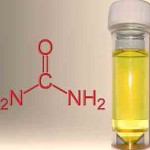
 Scientists have tinkered with a wide array of possibilities in an ever-urgent quest for any alternative fuel.
Scientists have tinkered with a wide array of possibilities in an ever-urgent quest for any alternative fuel.
So it shouldn’t be too surprising that researchers at Ohio University have developed a technology to produce alternative fuel from –of all things — urine!
In an odd way, by-products are an ideal source of alternative fuel. They’re renewable and whether through artificial or natural means, are constantly being generated anyway. So instead of letting the waste accumulate and take up disposal space, a growing number of companies have already begun recycling it as alternative fuel.
For instance, beer maker Anheuser-Busch has a bio-energy recovery system that turns waste water into natural gas, which is then used to power the brewing process. And Amtrak now has trains that run on an alternative fuel blend that includes converted beef by-products.
This latest idea involves extracting hydrogen as alternative fuel by simply running an electrical current through the stuff that typical ends up in the toilet. The process is similar to the electrolysis of water to produce hydrogen for fuel cells, as alternative fuel, except that it requires less energy since hydrogen can be more easily separated from ammonia and urea, the chemical compounds present in urine.
Gerardine Botte, a researcher at Ohio University who came up with the idea, thinks the technology can not only be a convenient way to supply clean energy, but also gets at the problem of municipal waste disposal. In an interview with the Guardian, she talks about pee power’s enormous potential: “Botte’s technology has the greatest potential for power generation in settings where large numbers of people gather – airports and sports stadiums, for example. An office building with 200 to 300 workers could generate 2 kilowatts of power, Botte has calculated. Granted, that’s not enough to power the building, but every drop in the bucket helps.”
The urine produced by 1,000 cows could generate 40 to 50 kilowatts of power, Botte estimates – getting rid of noxious ammonia in the process.
Her recently launched venture, E3 clean technologies has plans to build a “GreenBox” prototype that can be sold to companies and city agencies by the end of 2012.



